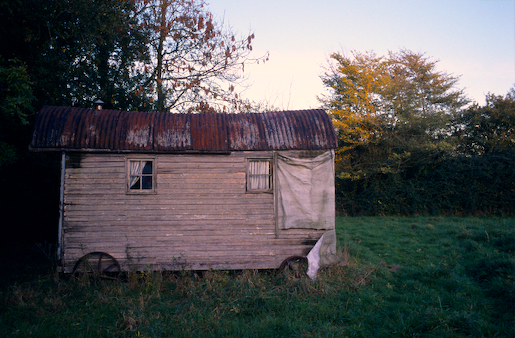 This essay first appeared in the programme book for the sixty-ninth Aldeburgh Festival, published by Aldeburgh Music, Suffolk, 2016.
This essay first appeared in the programme book for the sixty-ninth Aldeburgh Festival, published by Aldeburgh Music, Suffolk, 2016.
All words and pictures © Justin Partyka
I never met Roger Deakin. At one time it seemed our paths would cross, but they never did. He was the author of three celebrated books — Waterlog: A Swimmer’s Journey Through Britain (1999), Wildwood: A Journey Through Trees (2007), and Notes from Walnut Tree Farm (2008). He was a contributor to the “new nature writing” which emerged in the early 2000s.
In 1969 Deakin bought the 16th century Walnut Tree Farm and its twelve acres of meadows from a local farmer who had been using the derelict house to keep pigs in. Deakin got to work restoring his new home. He stripped the house down to its original skeleton of oak, ash and chestnut timbers. Gradually he rebuilt the house around him, sleeping in a bivouac with his cats inside the huge central fireplace until he had created himself a bedroom. And there he became a writer.
Deakin died from a brain tumour in August 2006, aged 63. A few months later I went to photograph the landscape of Walnut Tree Farm.
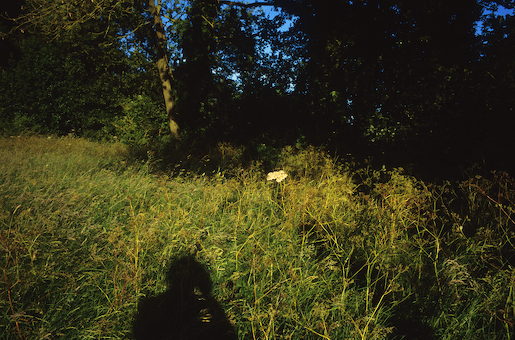
In November 2006 I made my way to Walnut Tree Farm for the first time. Heading from the Wash across Norfolk towards Diss, I crossed the river Waveney into Suffolk and followed the winding road to Mellis. Deakin’s partner Alison had sent me a copy of a hand-drawn map that he had used to direct visitors to his home. When I arrived Alison sat at the kitchen table sorting through a huge pile of Deakin’s notebooks. These would eventually form Notes from Walnut Tree Farm. She showed me an exhibition invitation I had sent to Deakin. She’d found it on his desk. We had a lunch of vegetable soup, bread, cheese and pickled herring. Deakin’s two cats perched on the edge of the table hoping for a taste.
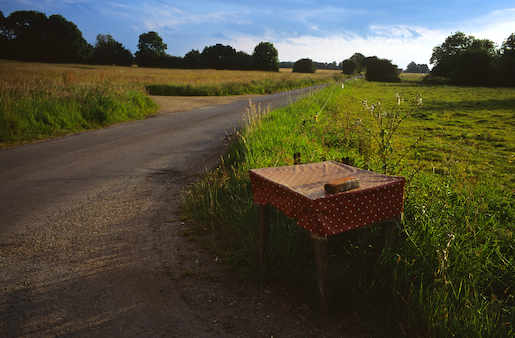
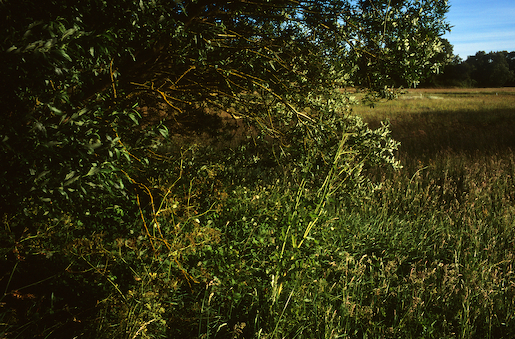
I spent the afternoon wandering around the garden and meadows, exploring and photographing. There was a lush overgrown wildness encroaching the landscape. And scattered around it were various things from Deakin’s daily life including shepherd huts, vehicles abandoned in the bushes, a table and chair by the moat, piles of chopped wood and his outdoor bathtub. I went to Walnut Tree Farm three or four times that November. I discussed with Alison the idea of photographing the interior of the house as well as the landscape, but it never happened. I later heard that things at the farm had changed… and then it was sold. My last visit was on a cold damp day. As I walked around nothing moved. It was silent. After an hour or so of photographing I noticed the sound of a faint knocking. At first I assumed this was coming from a neighbouring property. But as I worked my way back towards the house the noise became louder and more forceful. I wondered what was making this sound and went closer. The noise was too loud to be made by an animal or bird—the force and the steady rhythm sounded like it was being made by a human. It was coming from the loft room above Deakin’s garage. I looked up at the dark window but could see nobody there. I left.
*
Some years later, I start to go back to Mellis. I walk the common and its surrounding fields and tracks; photographing, trying to go deeper, trying to get to the heart of this place. The common land stretches out a mile long. Even on a bright summer’s day the wind seems to find its way here. The thick clumps of grass, meadow flowers and weeds, sway in the breeze. A small moat surrounds the common, and around its border are trees, bushes and hedgerows. Scattered amongst them are a few houses, one remaining working farm and a 15th century church. A dead-straight narrow road cuts through the centre of the common and heads off to the next village.
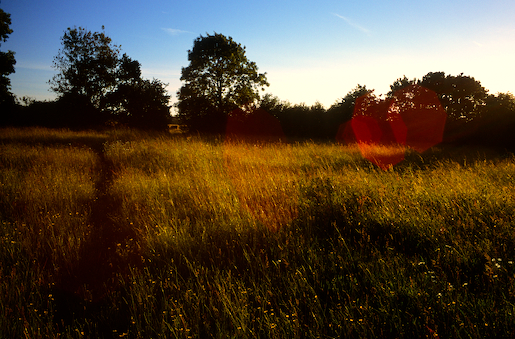
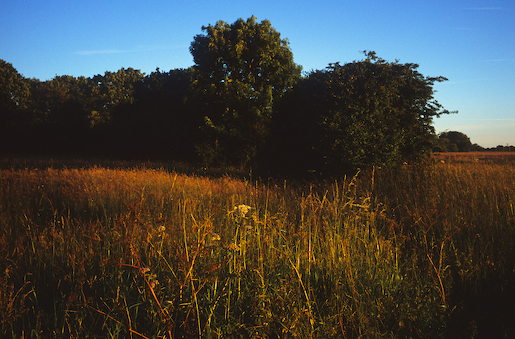
For hundreds of years people had lived off this common land. Their houses had been dug from its earth. They had grazed cattle, horses, sheep, goats and geese here. The trees had provided timber and wood for fuel. A windmill once stood here. There was no road straight through the common then. Instead a series of ancient droves and ways met there, linking the neighbouring commons and villages. Cowpasture Lane is one of the few that remain. It was one of Deakin’s favourite tracks to explore. Along here he made his regular excursions to nearby Thornham Woods. Deakin was an advocate for the historical importance of the lanes that led from Mellis common, highlighting their role as the main market roads to and from the village in past centuries. To walk what is left of these tracks is a way to step back in time.
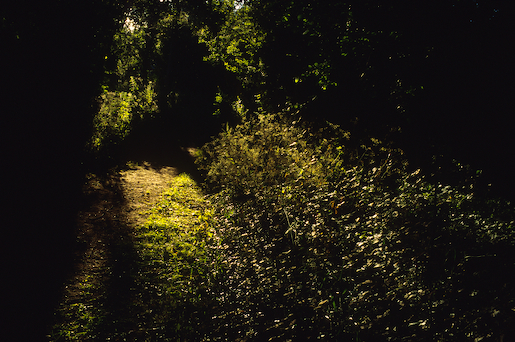
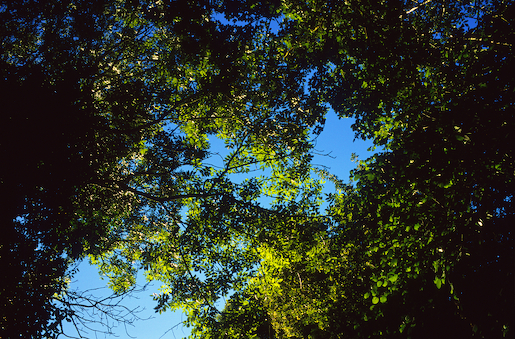
*
I knew little about Roger Deakin and his world when I first went to Walnut Tree Farm and made these photographs. At that time only his wild swimming book Waterlog had been published and I had not read it. His two other books, which extensively feature writing about his home and local landscape, would be published posthumously. What I did know about Deakin were the stories I heard from friends and acquaintances who did know him. To me Roger Deakin was the man who lived in the old timber house on an ancient Suffolk common; the teacher at Diss Grammer School who dressed in corduroy and took his students to the woods; the bohemian adventurer who was deeply rooted to his little patch of land; the man his fellow nature writer Robert Macfarlane would come to call “a latter day Thoreau.”
I realise now that a mythology was already emerging around Roger Deakin and Walnut Tree Farm. It is certainly not difficult to see Deakin’s home as a latter day incarnation of Henry David Thoreau’s cabin at Walden Pond. Both represent a haven for the man to live in harmony with nature, philosophise on his surroundings and write a manifesto from the experience. Thoreau wrote Walden (1854) with its famous line “I went to the woods because I wished to live deliberately.” It is a book known more by reputation than by readership, and continues to be the voice in the American and perhaps even global wilderness. In Deakin’s case it was the publication of his final two books along with the championing he received from his fellow nature writers which firmly established his popularity and made him our “latter day Thoreau.” His wide reaching reputation was confirmed to me in 2012 when two American women contacted me with a request: they were coming to England on a nature writers pilgrimage and wondered if I would be willing to give them a tour of “Deakin country.”
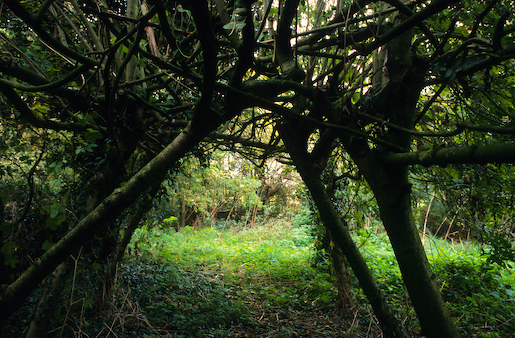
As he portrayed himself in his writing, Deakin was a free man. At Walnut Tree Farm he worked on chores that needed doing about the place. He wrote, not caught up in the bureaucracy of an academic institution or constantly beholding to editorial deadlines from papers and magazines. And he went on his regular excursions to the woods and the fields and the rivers and the sea. Was Walnut Tree Farm the Suffolk equivalent of Thoreau’s Utopian rural idyll? Deakin appears to have believed so, writing in his notebook: “There was a time for us too when Suffolk and the whole of the Waveney Valley was terra incognita, like the hills, woods and ponds around Thoreau’s cabin at Walden.” Perhaps there was. But in reality—just as Thoreau’s wooden hut—Walnut Tree Farm is not so extraordinary. There are a number of timber framed houses of a similar age throughout Suffolk, with a moat or pond of some description and a meadow to the rear. Maybe like many people who move to the country Deakin simply had nostalgia for the old ways of rural life on his small Suffolk farm.
*
My instinct told me that I should photograph at Walnut Tree Farm as soon as possible after Deakin’s death. I felt the photographs could become an important record of a specific time and place, a moment in history that would soon be gone. And it was my instinct again which took me back to Mellis six years later to continue photographing. I wanted to try and further understand the place, to finish the work I had started there.
While photography and writing can share similar concerns in a probing of locale, these photographs are not trying to imitate “nature writing” nor are they exactly “landscape photography,” although on the surface they can easily be interpreted as being entangled in both of these genres. The photographs do depict “nature” in some kind of loosely defined form and they are made in a “landscape” but that is where the links end. If the photographs have to be categorised at all, I prefer the term “rural photography” for its all encompassing embrace of life and land and how they mutually shape each other. East Anglia is rural in the deepest sense of the word.
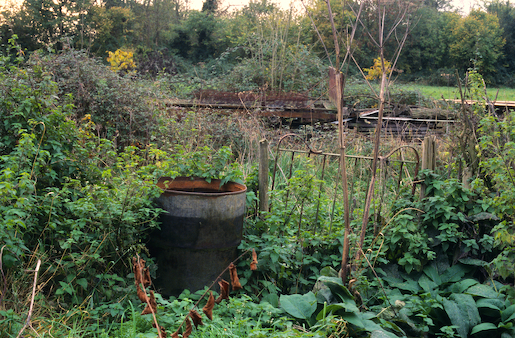
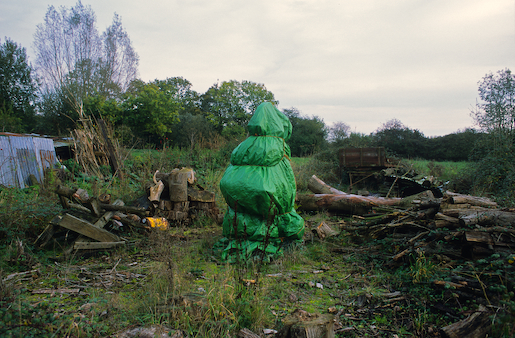
For me photography is about an intuitive process of gradual assemblage. Roger Deakin’s death sparked a curiosity that I wanted to explore with a camera: what did his world look like? So during the melancholy month of November 2006 I went to Walnut Tree Farm to find out. Over the course of five years I contemplated the photographs that came from these first few visits to Mellis. The more I tried to make sense of the photographs and thought about how to use them, the clearer it became that there was more work to do.
When I eventually returned to Mellis it was during the summer months of 2012 to 2014. What is evident in these later photographs is the acute physical presence of light. It is an obsession with the fleeting alchemy of sunlight which lies at the very core of why I am a photographer. To work with natural light in this way is a uniquely photographic endeavour. It relies on the use of a small handheld camera for its agility and speed. It is a creative process which is spontaneous, responsive, and embraces serendipity. As an artistic medium perhaps this is where photography parts ways with the slower more cerebral creative forms such as writing, sculpture and painting. It is about continually searching for and anticipating the moment. It is about making pictures on the move, and the best ones often come unexpectedly. To photograph in this way is an intuitive commitment to improvisation. I believe this is where photography shares closer similarities with exploratory forms of music: the dissonant soaring complexity of John Coltrane’s jazz (Live in Seattle, 1965), or the guitar driven extended-jam blues and country rock of the Grateful Dead (at the Academy of Music, New York, 1972). At least, this is where I seek my influences.
*
Roger Deakin was a regular visitor to the Suffolk coastal town of Aldeburgh. He had friends in the town and would come to swim in the sea and buy fish from the huts on the beach. He liked to walk along the shingle towards Thorpness to see the squat rogue apple tree that somehow miraculously grows half buried out of the stones and even bears good fruit. Deakin also had links with Aldeburgh Music. In 1982 he arranged a series of folk concerts featuring Carole King, The Chieftains, and Loudon Wainwright who all performed at Snape Maltings Concert Hall. He was also a filmmaker and spent time in Aldeburgh making a film about Paul Bunyan, the operetta written by Benjamin Britten and W. H. Auden celebrating the American lumberjack folk hero. This was just a small aspect of Deakin’s creative life. His interests were far reaching.
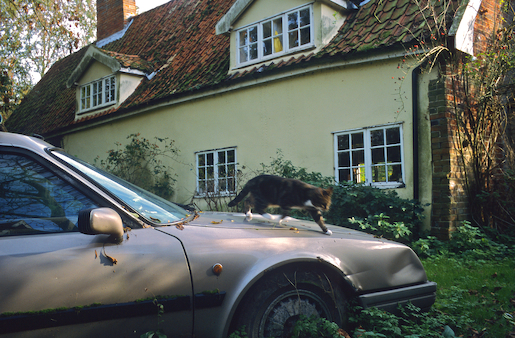
2016 marks the tenth anniversary of Roger Deakin’s untimely death. He came to Suffolk over forty years ago. I went to Mellis in search of something—what had attracted him there? But I arrived too late. Deakin was gone and his world and its mysteries had faded back into the pages of his books.
*
Our tribute to Roger Deakin continues tomorrow with a piece from Joe Minihane of Waterlog Reswum.